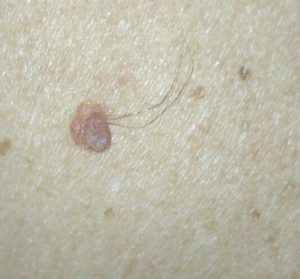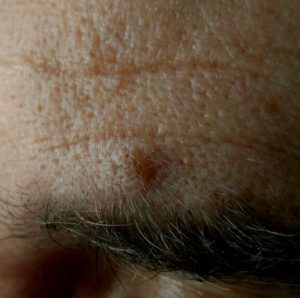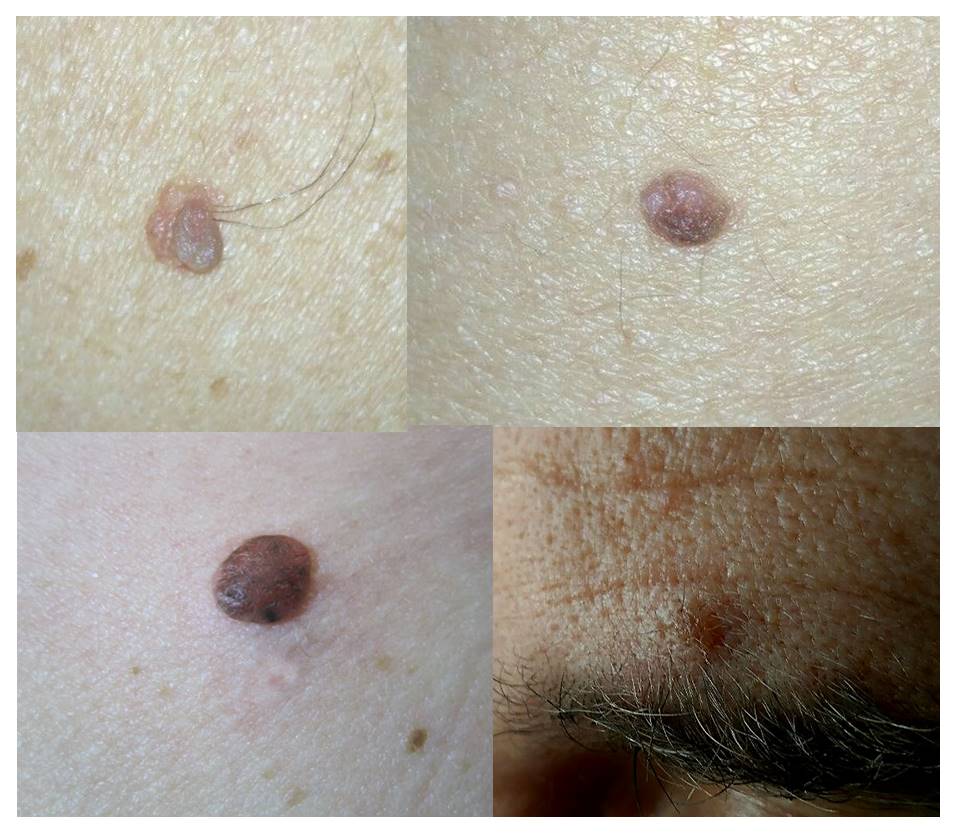It is common to confuse certain types of moles with warts. You may remember Cindy Crawford’s famous lesion on her upper lip…would you have thought it was a mole?
What are intradermal nevi and compound nevi?

Both are a type of mole (technically called a “melanocytic nevus”) that are usually not present at birth. They are lumpy, soft, brown or flesh-colored moles that usually appear on the face, neck, and back starting in adolescence. Sometimes they have some hair inside. They can easily be confused with warts or fibroids, but they are not the same.
Intradermal nevi are frequently on the face, neck and trunk.
Why do compound nevi and intradermal nevi appear?
Moles usually originate in the lower zone of the epidermis (the most superficial layer of the skin) and are technically called “junctional nevi” (because they are located at the junction between the epidermis and the dermis). As the years go by, they gain volume and go deeper into the dermis (which is underneath the epidermis), first becoming “compound nevi” (when they are both in the junction and in the dermis) and later becoming “intradermal” (when they are only in the dermis).

As they become larger, they also lose their ability to produce pigment (called melanin) and therefore become lighter over the years, becoming flesh-colored in many cases. Hence they are easily confused with warts or skin tags.

How are intradermal nevi diagnosed?
A simple clinical examination by a dermatologist is usually sufficient. A dermoscope is often used to confirm the diagnosis. In very rare cases, it may be necessary to analyze the lesion to confirm that it is a nevus and not something else (e.g., basal cell carcinoma).
Should compound or intradermal nevi be treated?

It is not necessary to treat compound or intradermal nevi, as they are benign lesions by definition and do not pose a health risk. It is not better to leave them or to remove them; depending on the circumstances, one or the other may be chosen. For example, they can sometimes be uncomfortable or unsightly, and one may prefer to remove them for these reasons.
It is not necessary to remove compound or intradermal nevi as they are benign.
How can compound or intradermal nevi be removed?
The removal of compound or intradermal nevi is performed under local anesthesia in a simple procedure that we usually perform in the same office. Sometimes sutures may be necessary, and in other cases (most) we use techniques such as electrocoagulation or CO2 laser to heal the wound, with great aesthetic results.
